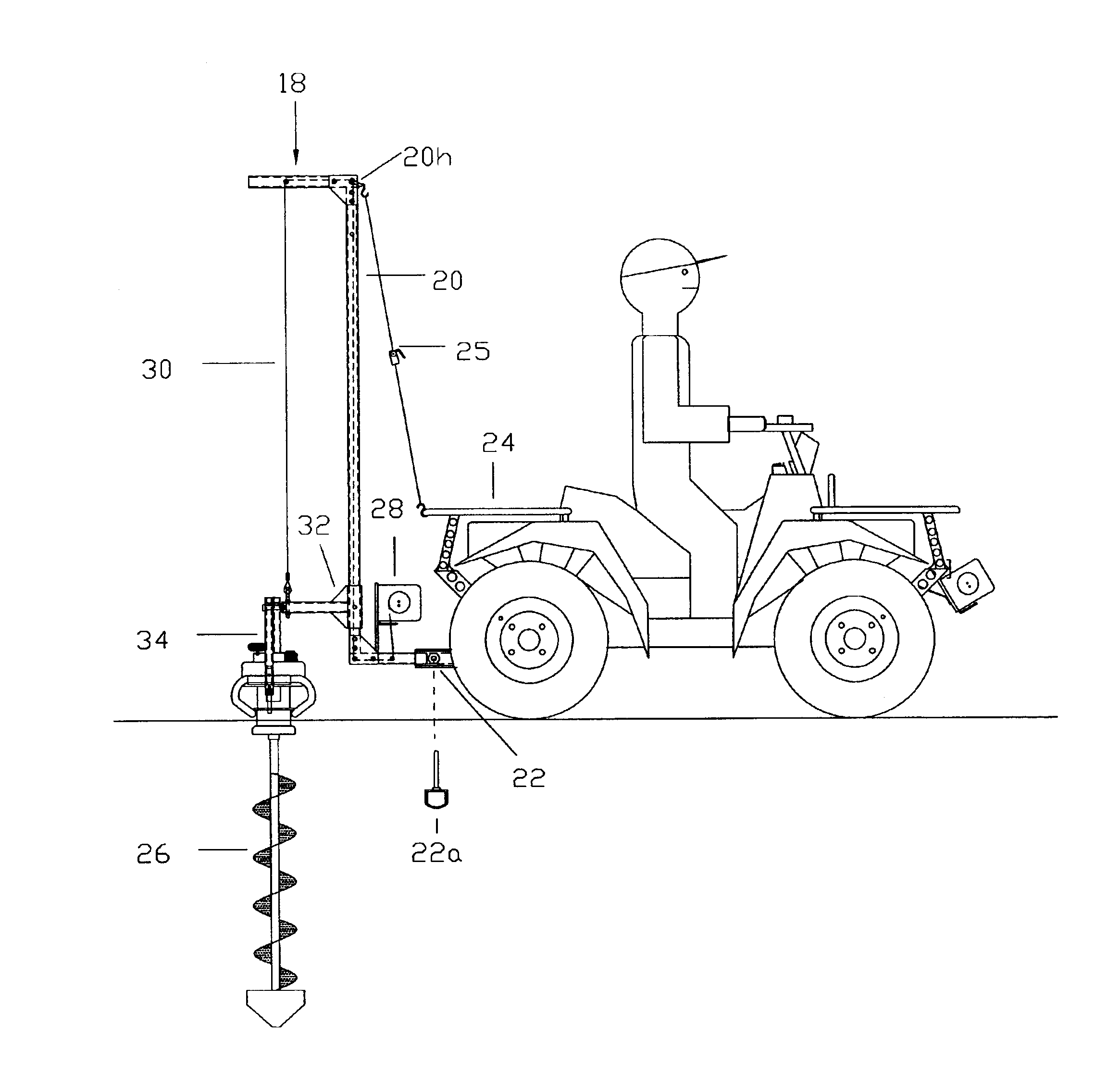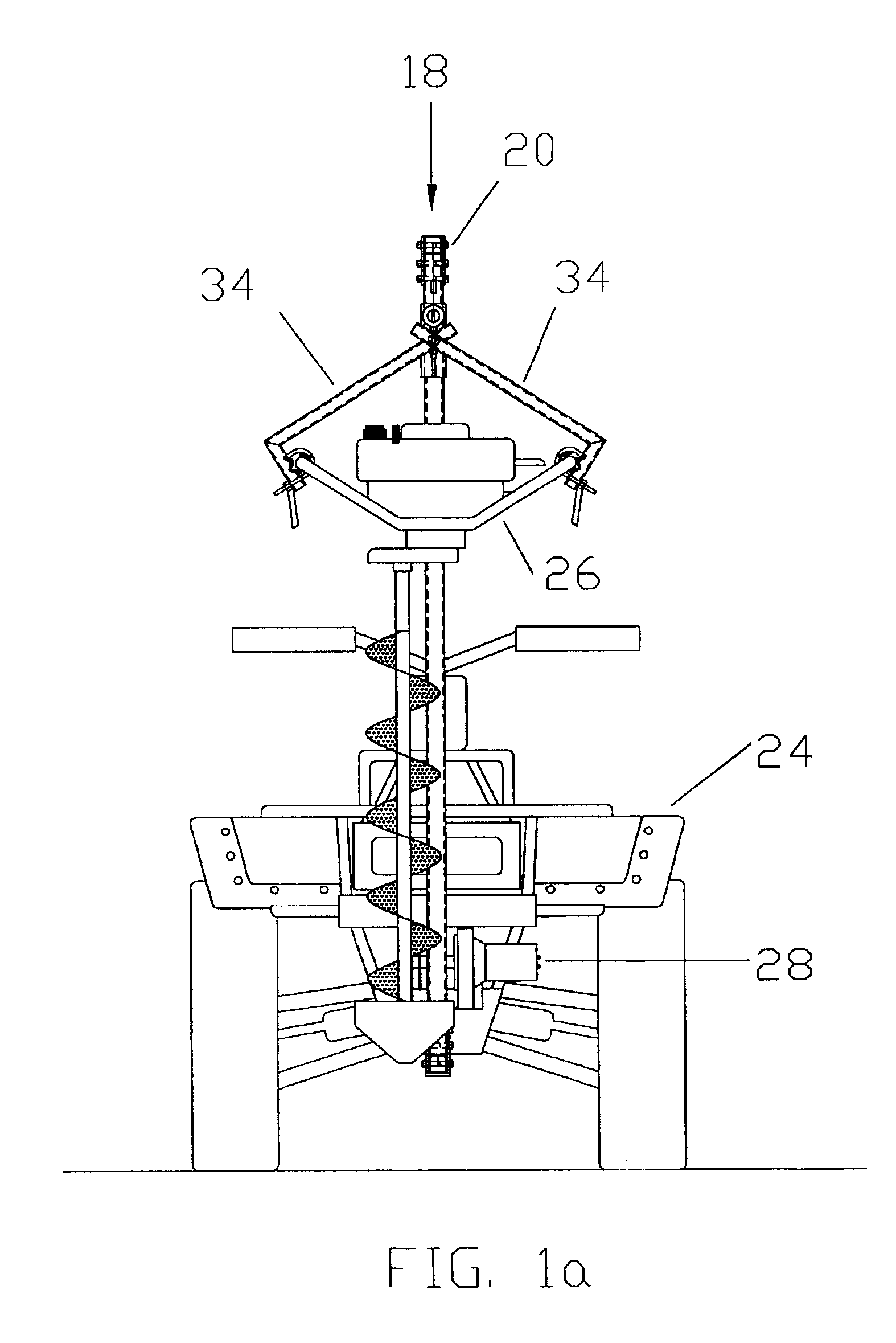Auger/vehicle interface jig
a technology of vehicle interface and auger, which is applied in the direction of earth drilling, metal working equipment, drilling machines and methods, etc., can solve the problems of excessive manual the effort required to transport and utilize the available portable auger devices can expel a significant toll on the user, and the excessive manual effort associated with their implementation
- Summary
- Abstract
- Description
- Claims
- Application Information
AI Technical Summary
Benefits of technology
Problems solved by technology
Method used
Image
Examples
Embodiment Construction
[0071]The preferred embodiment of the present invention is illustrated in FIGS. 1 through 10. FIGS. 1 through 2a show various views of a basic version of the auger / vehicle interface jig 18 in various states of use. The three main components or assemblies of the auger / vehicle interface jig 18 are illustrated in these same figures and consist of a carriage guide assembly 20, a sliding carriage assembly 32 and an automatically adjusting auger receiver assembly 34. The sliding carriage assembly 32 is affixed to the carriage guide assembly 20 by such means that it is able to move vertically up and down along the vertical support 20d of the carriage guide assembly 20. The automatically adjusting auger receiver assembly 34 is then connected to the opposite end of the sliding carriage assembly 32. The auger / vehicle interface jig 18 is made of tubular steel, however, it is to be understood that all or portions of the auger / vehicle interface jig 18 may be made from materials such as other for...
PUM
 Login to View More
Login to View More Abstract
Description
Claims
Application Information
 Login to View More
Login to View More - R&D
- Intellectual Property
- Life Sciences
- Materials
- Tech Scout
- Unparalleled Data Quality
- Higher Quality Content
- 60% Fewer Hallucinations
Browse by: Latest US Patents, China's latest patents, Technical Efficacy Thesaurus, Application Domain, Technology Topic, Popular Technical Reports.
© 2025 PatSnap. All rights reserved.Legal|Privacy policy|Modern Slavery Act Transparency Statement|Sitemap|About US| Contact US: help@patsnap.com



